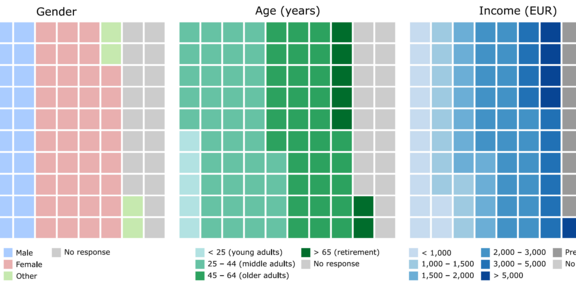New Paper in Cities: Relationships between Sense of Place and Urban Facilities

Urban facilities, understood as publicly accessible establishments characterising the functional mix of urban environments, are multi-faceted. They include shops, places of worship, government institutions, and others that usually appear together and form local functional contexts. We do not always consciously perceive all of these institutions as we walk past them, but their presence still very likely influences our sense of being in a place at a subconscious level. The impact of these holistic urban functional environments on sense of place is the focus of a Lisbon case study that we published in the journal Cities as the result of an international collaboration. The data collection was done through a web mapping-supported survey, where we not only collected traditional survey responses, but also asked respondents to draw spatial footprints of places that are meaningful to them on a map. In this way, we were able to operationalise, firstly, a psychological model of sense of place that encompasses three dimensions: place dependence, place attachment, and place identity. On the other hand, the polygons allow us to connect the given answers with point features describing urban facilities, which we extracted from Google Places. These different aspects were then fed into a structural equation model to operationalise latent constructs representing the three aforementioned dimensions of sense of place and different types of categories of urban facilities. A main finding of our research is that temporal rhythm, that is, the nature of recurrent interaction with and at places, seems to play a central role in the relationship between urban facilities and sense of place. The modelling results show that exposure to everyday urban facilities such as grocery shops is negatively correlated with place identity, while facilities that are leisure places are negatively correlated with place attachment. A notable difference between these two categories is the frequency with which people typically interact with them (among other differences related to functionality and other aspects). A second important finding that emerges from the first is that people find places meaningful even when they are negatively associated with certain dimensions of sense of place. Despite the negative associations revealed, many respondents described the corresponding areas as personally meaningful. The latter finding leads to a third result of our research, namely that terms such as supermodernity, non-place, and placelessness do not appear in extreme form in our results. Even transit spaces frequently described as anonymous and placeless are reported and thus seem to have certain place-making qualities, which necessitates a more differentiated consideration of these terms.
Further conclusions, details, and policy recommendations can be found in the full article:
Westerholt, R., Acedo, A. and Naranjo-Zolotov, M. (2022): Exploring sense of place in relation to urban facilities – evidence from Lisbon. Cities, volume and issue pending. DOI: 10.1016/j.cities.2022.103750.
